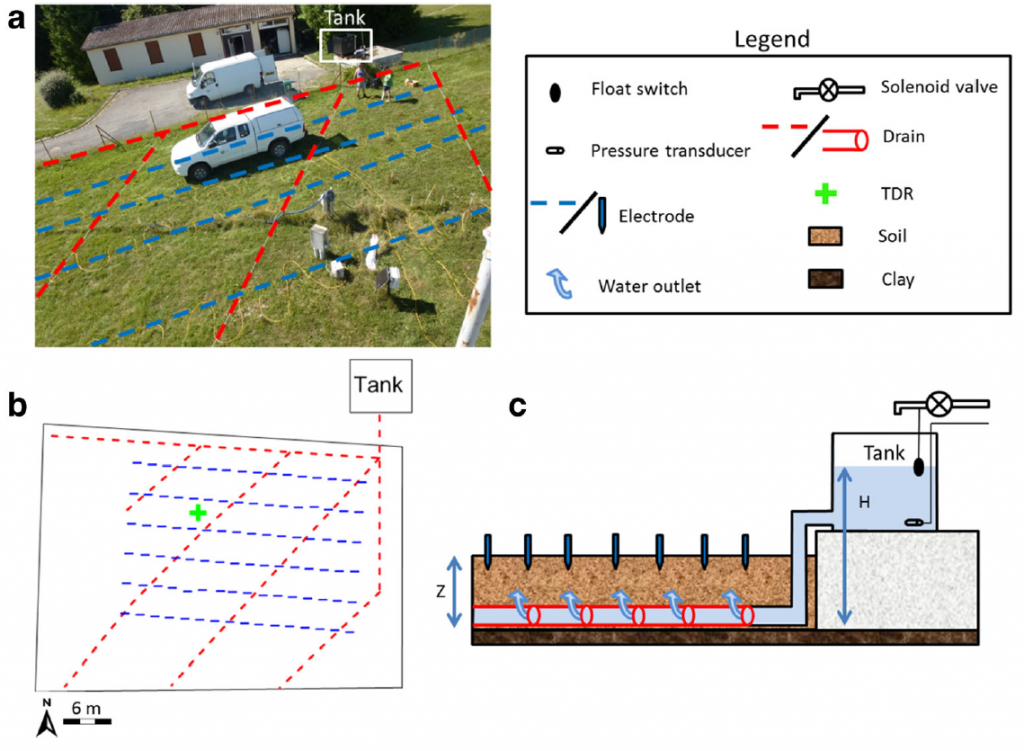Evaluation and localization of an artificial drainage network by 3D time-lapse electrical resistivity tomography

In France, 10 % of total arable land is equipped with subsurface drainage systems, to control winter and spring waterlogging due to a temporary perched water table. Most of these systems were installed in the 1980s and have aged since then and may now need maintenance. Sometimes, the location of the systems is known, but the standard situation in France is that the original as-built master sketches are no longer available. Performance assessment of drainage systems and curative actions are complicated since drain location is unknown. In this article, the authors test the application of a nondestructive drain detection method which consists in water injection at the outfall of the drainage network combined with time-lapse electrical resistivity tomography (ERT) monitoring. To assess the performance of this methodology, which consists in measuring electrical resistivity from electrodes placed at the nodes of a 1.2-m regular mesh, the authors interpreted the signal using a two-step approach. The first step is based on 3D ERT numerical modelling during a scenario of surface infiltration processes (forward modelling followed by geophysical inversion); this step optimizes the ERT method for locating the infiltration at depths below 1 m. The second step is the validation of the results obtained by numerical modelling with an experimental data set, using water injection into the drainage network combined with time-lapse ERT monitoring on an experimental field site. The results showed the relevance of time-lapse ERT monitoring on a small agricultural plot for locating the drainage network. The numerical results also showed several limitations of the combined methodology: (i) it is necessary to use an electrode spacing unit less than 1.20 m, which does not facilitate investigation on large agriculture plots, (ii) measurements must be taken when resistivity contrast is the strongest between the infiltration area and the soil and (iii) the volume of water needed for injection can limit the extension of the method.
Copyright © Springer-Verlag Berlin Heidelberg 2016
DOI: 10.1007/s11356-016-7366-x
(T. Jouen1, R. Clément1, H. Henine1, C. Chaumont1, B. Vincent1, J. Tournebize1)
Download: WP63_Jouen_3D_time-lapse_electrical_resistivity_tomography

